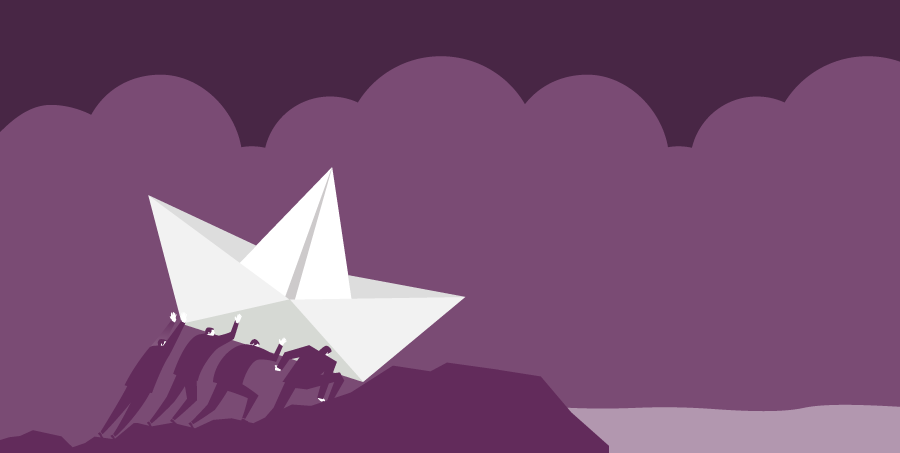
A product designer's journey is filled with wonder. It can also be rife with peril and despair. So how do you enjoy the awesome parts of product design without letting the negative parts discourage you and get you down?
A Product Design Odyssey
We design products at ZURB. We design products with clients, with internal teams, and we train people to do the same in their companies. Since 1998 we've been helping people design products and we've learned that amazing sparks can happen when teams work together seamlessly. We also learned that if good flow is interrupted it's hard to get up and be productive again. We put together a list of our top seven product design challenges and how we've overcome them.
Feel #1: Getting a Crew Together
Getting a team together is a risky challenge for everyone involved. Learning to improve your value as a team member is an ongoing process where you become skilled enough to earn autonomy in your work. We value problem-solving abilities above all else, and we hire based on a skill-set baseline — as well as that passion and drive to solve problems.
Joining a team doesn't end when your butt is in the fancy Aeron chair wrangling pixels. Hiring is risky for teams because a new employee could either uplift the team or set everyone back and lower morale. It's also risky and stressful for the new employee who feels anxious to perform at a high-level from day one.
How to deal with the feel: We get buy-in from the entire team on new hires. When we vote to hire someone, we're committing to supporting the person in their career and have become invested in their success. This is great for teams because it reduces a lot of politics that growing teams traditionally suffer from, and helps new peeps acclimate faster.
Feel #2: Set Sail to Iteration Island
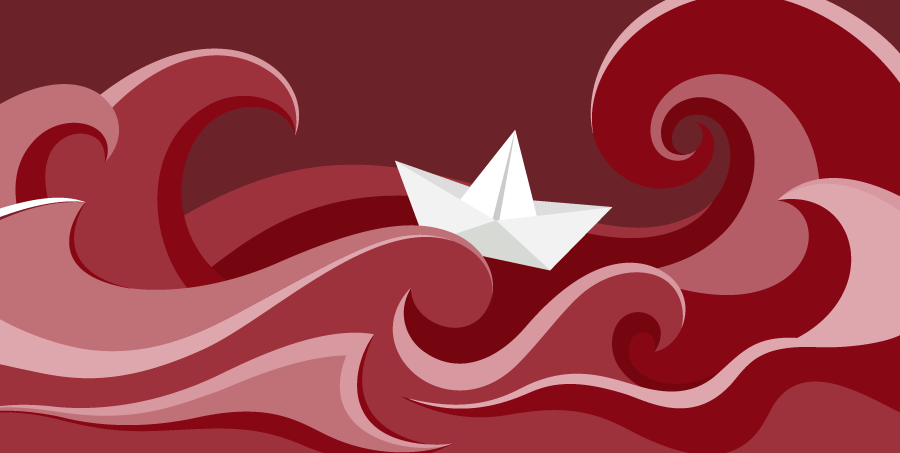
When you're working toward a product release, it seems like the release date is everything. Problem is the relative quickness of building things gets people to commit too quickly and assume that their solution to a problem is the best. That means when a stakeholder inevitably sends feedback, designers will flip tables.
Designers get a lot of flak for being attached to their work, but what non-designers don't understand is that this comes from a good place. This attachment is (usually) a result of passion, not arrogance. There's nothing worse than a designer that immediately responds with 'I'll change it!' when his design decisions are questioned. So, designers … get mad! Tension is great as long as everyone is engaged and gives everyone else the benefit of the doubt.
How to deal with the feel: seek out feedback. The more you ask for it, the more trust you'll build with stakeholders and getting feedback will become less stressful. When stakeholders feel trusted, they're less inclined to constantly nudge product designers because they know that their feedback is valued. A Progressive Design process requires a tight feedback loop, initiated by the person who did the work. Practice getting feedback often by checking in with other team members. Be 'disruptable', and encourage your team to do the same. Learn to disconnect from your work, then assume that the person giving you feedback means to improve the product. They don't want to tear down your amazingly flawless work. They want to help you grow by reframing the problem and finding a better solution together.
Feel #3: Everybody Get Out and Push!
When deadlines loom, everyone needs to contribute. While top-down guidance is necessary, in execution everyone should contribute tangible value to the team outside of planning and keeping everyone on track. Contributing value doesn't necessarily mean pushing code — stakeholders can talk to customers, stay on top of analytics, write content and marketing materials. There's definitely no shortage of things to do as a team gears up for launch.
This might get some pushback from folks more inclined toward traditional management, who see living in a spreadsheet as just as valuable as pushing code. However, something magical happens to a team when they see the leader out in front pulling them towards success.
How to deal with the feel: We don't have any managers at ZURB. Design management is certainly a key skill for a leader, but it's not a role. Leaders know when to manage and when to directly contribute, and they have the skills to do both.
Meet Matt our Notable team lead, and Nic our customer advocate. Over the past couple of months, they've been working together on customer development efforts — demoing the product, collecting feedback, and signing people up for early testing — while also working through feature iterations and fixes on the new Notable. They both contribute immense value to the team by speaking to customers and relaying feedback while the rest of the team iterates on the product.
If you want to boost your team's morale, get out and push!
Feel #4: Avoid the Siren Song of New Trends

Flat design is in? FLATTEN ALL THE THINGS! Motion is in? If it ain't bouncin' around my page it better GTFO! Bunnies are in? Put carrots everywhere! Trends are shiny and interesting, but they distract teams from focusing on problem-solving. At the end of the day, if customers can't complete a task or get their information, they won't care if your site has sleek SVG animations everywhere.
When the hamburger navigation pattern first became a thing (I want to say Facebook is to blame for popularizing it), everybody jumped onboard. This is it! This is the holy grail of navigation. Slap it on every site you own. Even we at ZURB jumped on this bandwagon. A few years later, we're realizing that despite the ubiquity of this pattern, users still have no idea what to do with it.
How to deal with the feel: In building the new Notable, we have a few key tags in the GitHub repo to help us prioritize features and issues.
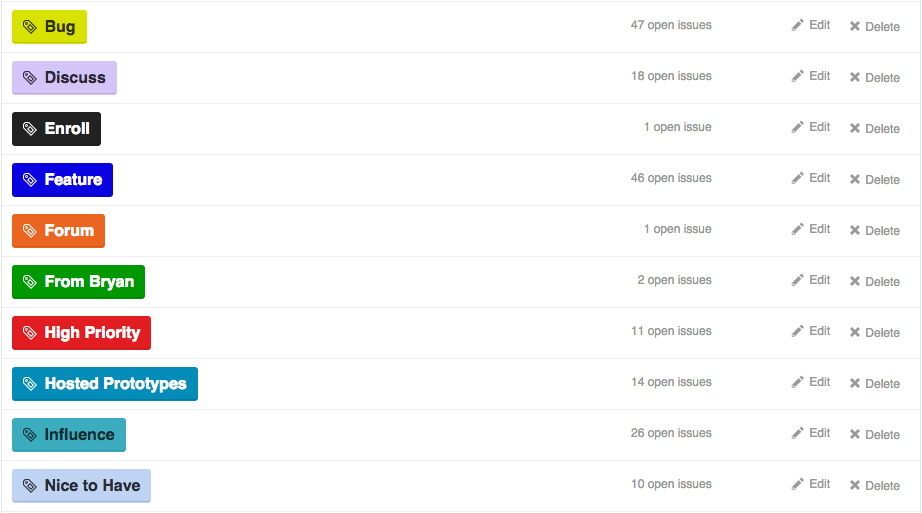
There are a couple of labels that are obviously more important than others such as 'High Priority' or 'From Bryan' — both essentially meaning: Address Immediately. Then there are labels like 'Discuss' and 'Nice to Have.' These are usually added to issues that are not mission-critical. That makes it easier to prioritize which issues to close down. If it ain't broke don't fix it, unless you've run out of broken things to fix.
I just want to be heard. I want to challenge us to be better as a team and pass on all the knowledge that I've gained from working on this for six years. I want to share the two-hour conversations we had hammering through an idea four years ago that influenced the result!
—Bryan, Chief Instigator
Feel #5: Plunge Into the Pit of Despair
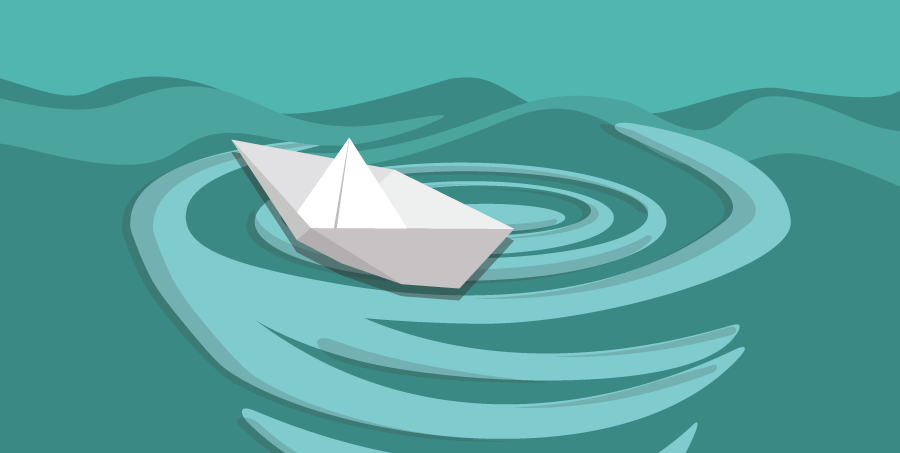
It's bound to happen. Things will go wrong and they'll go wrong all at once. Your image-uploading code will fail, your comment system turned out to be a lot more complicated to use than you thought, and you missed out on implementing a feature that was important to some of your biggest customers!
Welcome to the pit of despair. You are not alone.
As product designers, we're not unfamiliar with the pit. It hits hard, coloring your whole project and makes issues seem way bigger than they are. It can be caused by the smallest problems.
We fell into the pit of despair in designing the new Notable. We were trying to get the app to work functionally and neglected the visuals. This led to the app appearing broken even if it wasn't, which caused everyone to feel run-down and ineffective. A quick visual facelift made the team feel better about their work — things were looking less broken, which gave us the push we needed to climb out of the pit of despair.
How to deal with the feel: Keep calm and make a list. Remember the prioritization system that we talked about previously? This will again be the solution to your problem. No matter how big or small it is, what is the most completely broken thing? Figure out a plan with your team to tackle that first, then move down the list. Without a prioritized list, it's difficult to get out of the pit, so make sure your list is always full of things to do. Once you're done fixing things and you get out of the pit of despair, you can start making a list of things to improve, i.e. the fun stuff!
Feel #6: Venture Through the Straits of Slow Servers
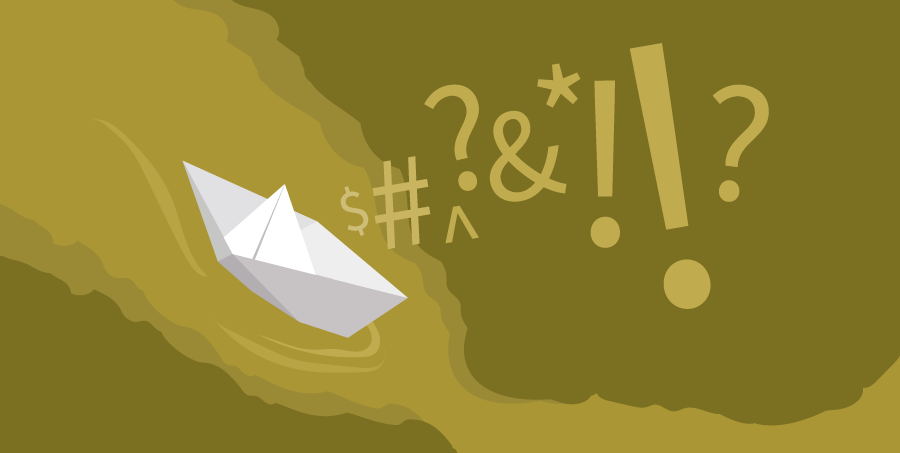
There's nothing more frustrating than working through several iterations of a feature, ironing out minute interactions, and getting everything in place — only to have your servers crap out on you. Put yourself in the customer's shoes. They're even more frustrated than you because they're trying to get their work done, and all they get are server errors. This can frustrate you and leave you feeling helpless, especially if dealing with server issues isn't your strong suit.
About a year ago, an newly exposed SSL vulnerability affected pretty much every site out there, including Notable. The engineers on the team were hard at work fixing the issue and patching the problem. The designers and customer advocate were dealing with a totally different problem — in a crisis that could only be fully resolved by writing code, how can non-engineers contribute in meaningful ways? We put together a plan: we knew that we had to be upfront with our customers and clearly communicate the issue and how we're working towards resolving it.
How to deal with the feel: Face the issue head-on and work with your engineers to figure out the problem. We described before how designers (including engineers) are also customer advocates. This is more true when there are problems. Stop feeling helpless and start talking to customers. If there's a server issue, make sure you reach out to people and let them know that you're experiencing problems. Provide frequent updates and make sure you get back to anyone who emailed or tweeted at you with complaints.
Be honest about the situation with your customers and work on helping them achieve their goals, even if it's at the detriment to your product in the short-run. Tim Cook did this during the heights of the Apple Maps problems. By recommending other apps, he might have turned people away from using the apps in the short term, but he won over customer loyalty in the long run because he was honest, vulnerable, and most importantly showed that his primary concern is solving the customer problem.
Feel #7: Explore the Caverns of Customer Development
So you've been working on this product for a couple of months. You're pretty proud of the work you were able to accomplish with your team. You set up a call with a customer to get their feedback, and suddenly everything seems more broken than it actually is. You notice every misplaced pixel and every broken interaction, even before the customer calls it out. And then the customer calls out other problems that you didn't even notice!
How to deal with the feel: In the words of my favorite dad band: Get over it! Your customers are the reason you're still around, so make sure you listen to them. There's a worrying trend in the industry— that by not talking to customers, you'll somehow build a simpler, more focused product. Wrong. As we build the newfangled Notable, we're also demonstrating the new platform to at least one customer per day, getting feedback, and iterating based on customer needs and business goals.
Customer feedback isn't a to-do list. It's feedback that you still have to organize and process before letting it influence your work. Feedback helps you justify your design decisions, as well as challenge your assumptions. It's not an excuse to put your brain on a shelf.
Product design is a roller coaster. It's super scary at first — there are a lot of pieces that all need to work together to solve problems. It's also exciting, and as you're getting on the ride and ramping up, your excitement and fear escalate — then you plunge for that first time, realize there's no turning back, and start to enjoy the ride. Once it's over, you know you'll be right back in the front of the line for another go!
Notable, our product design platform, is now in private release! Get access today! Get Early Access to Notable